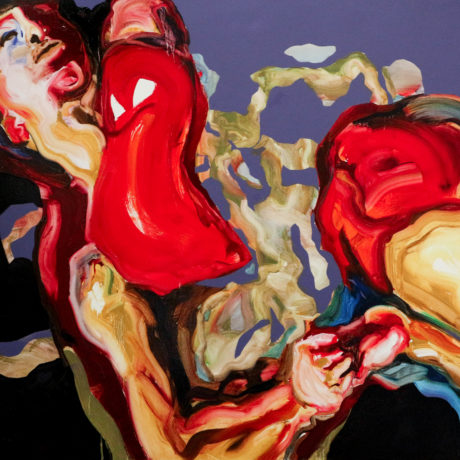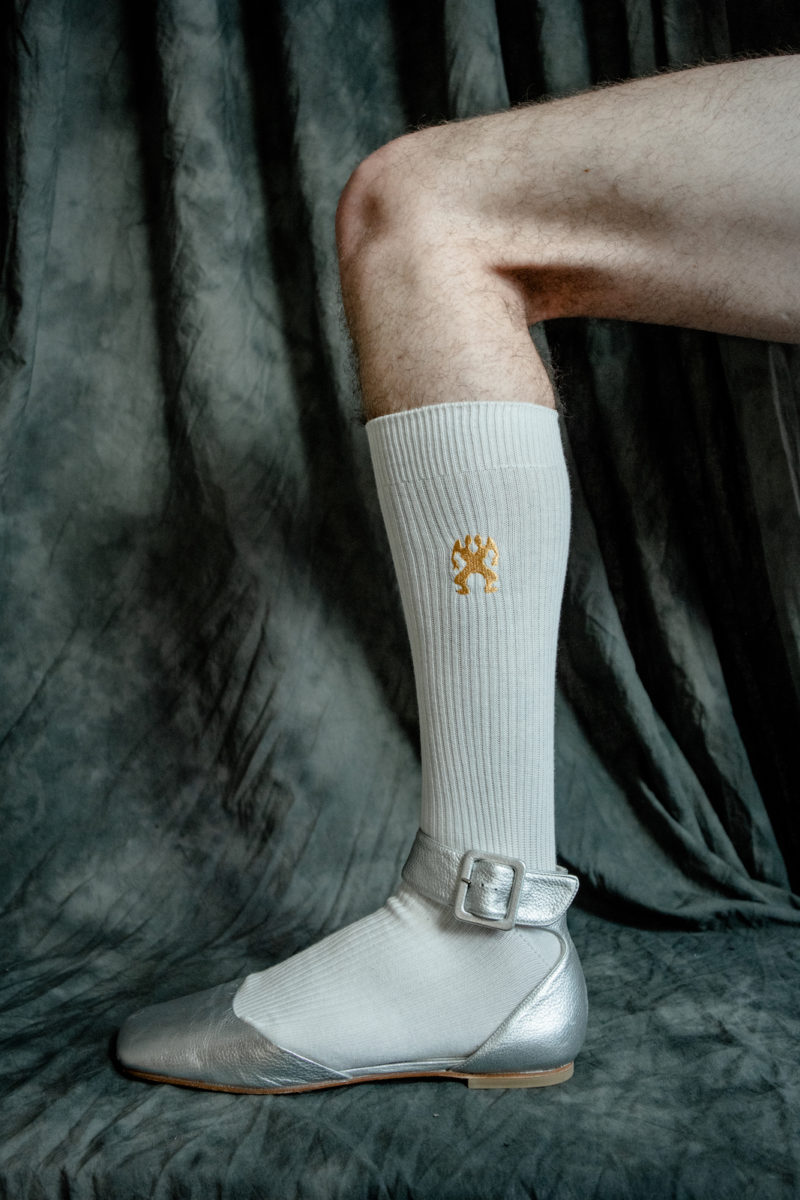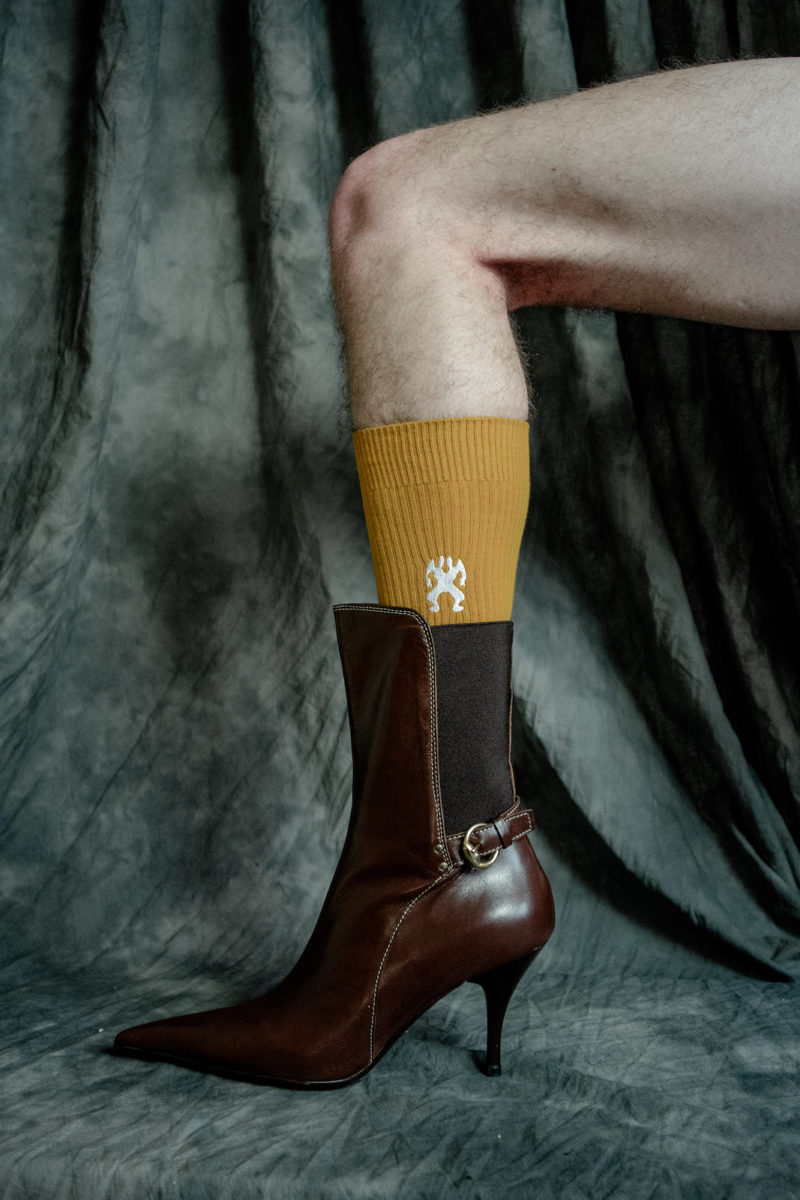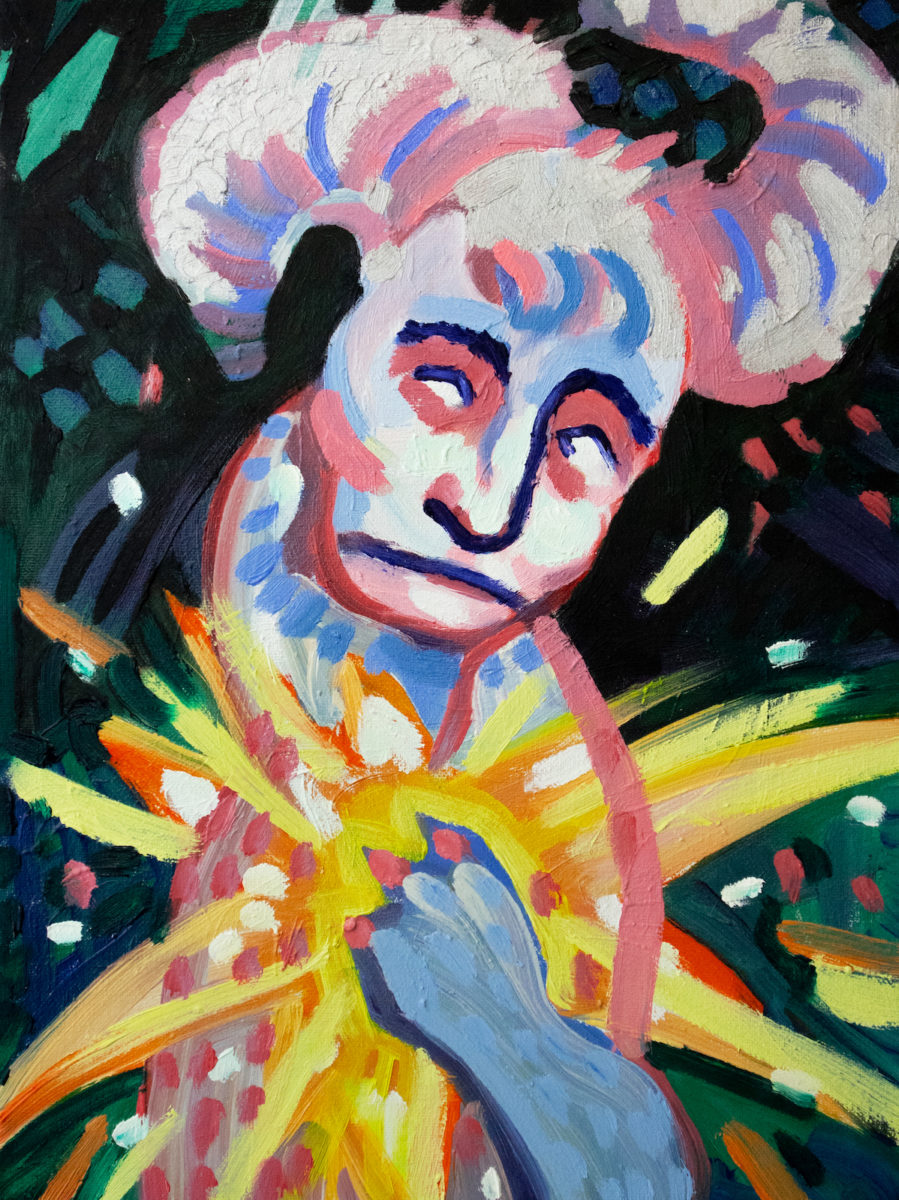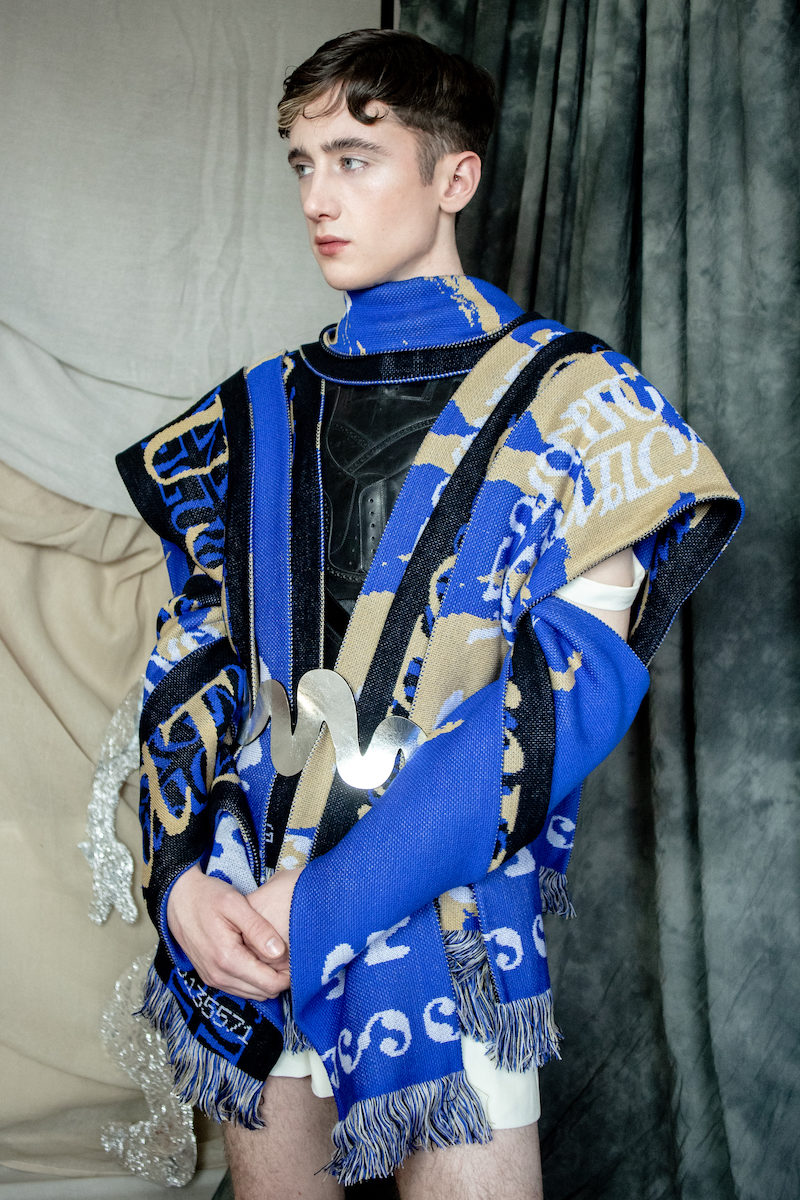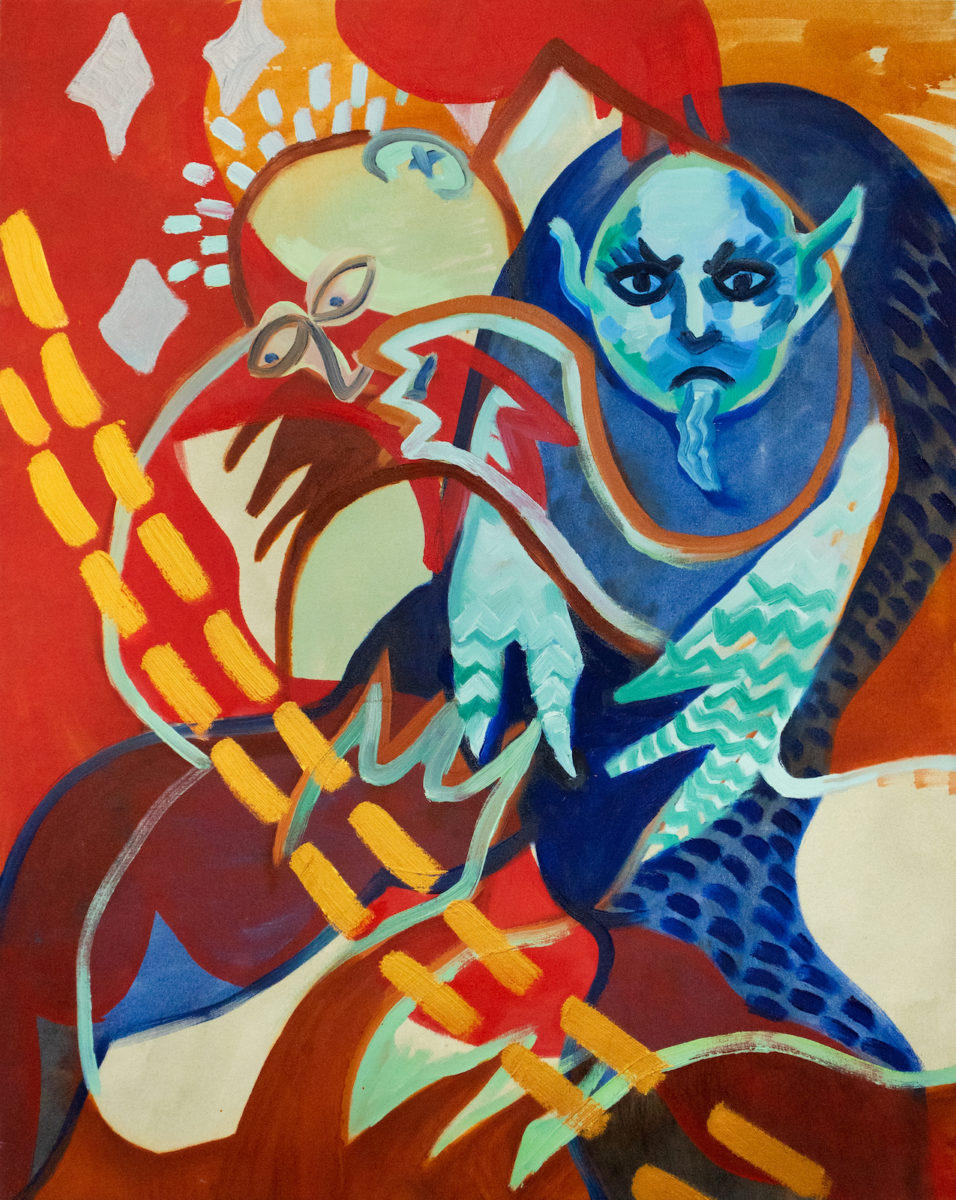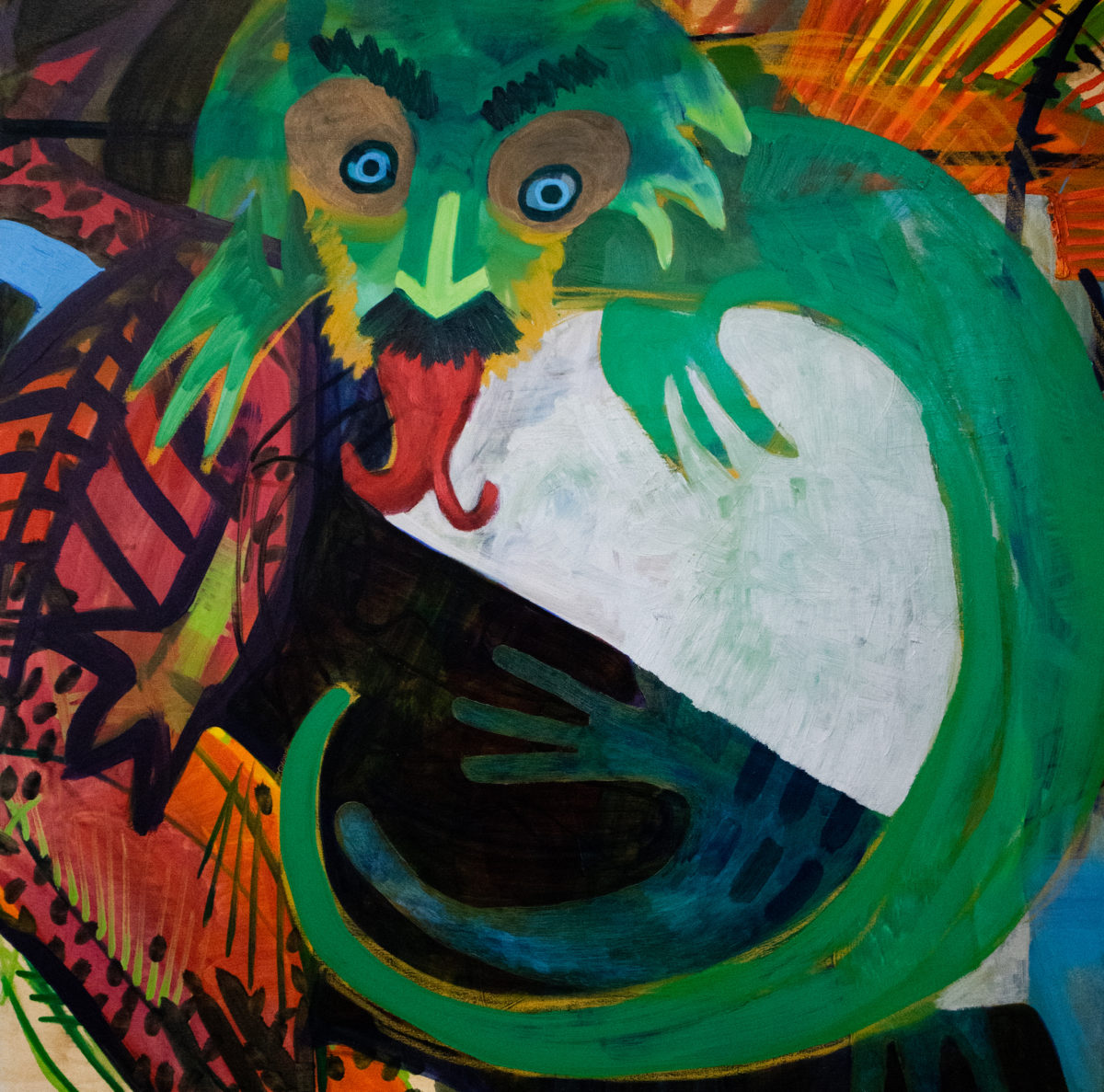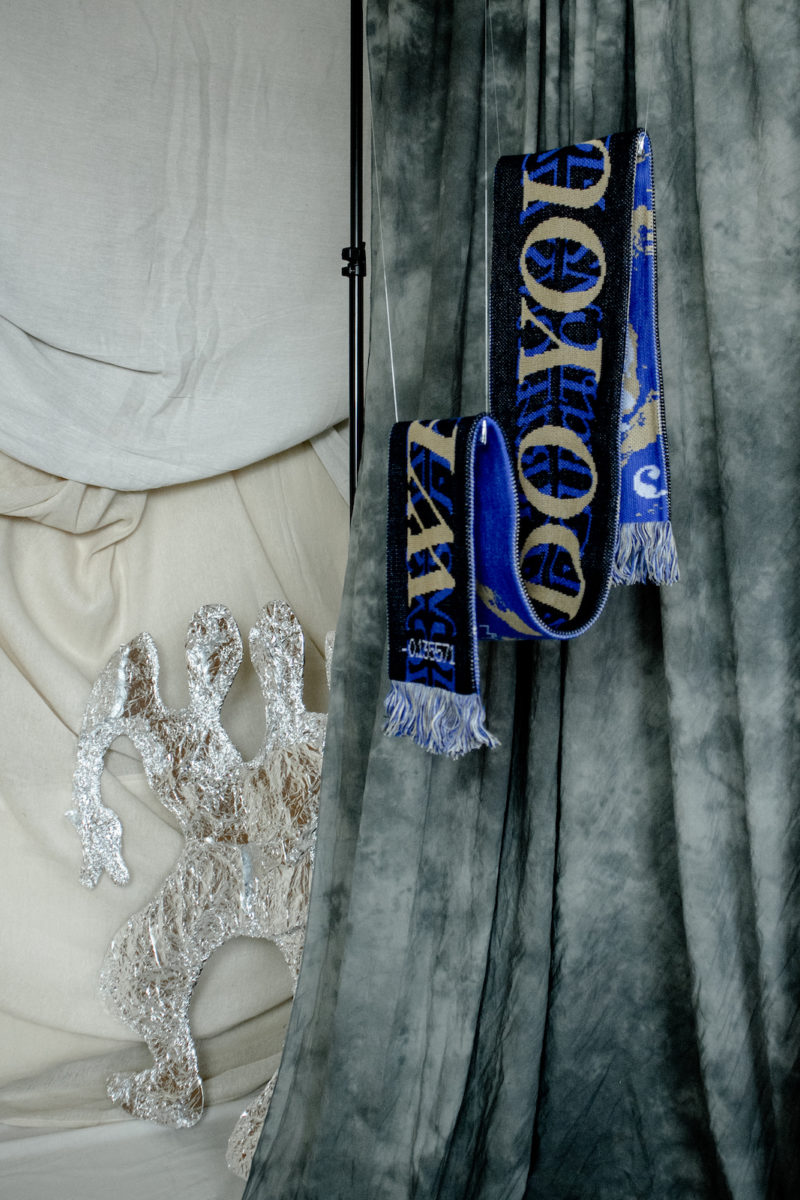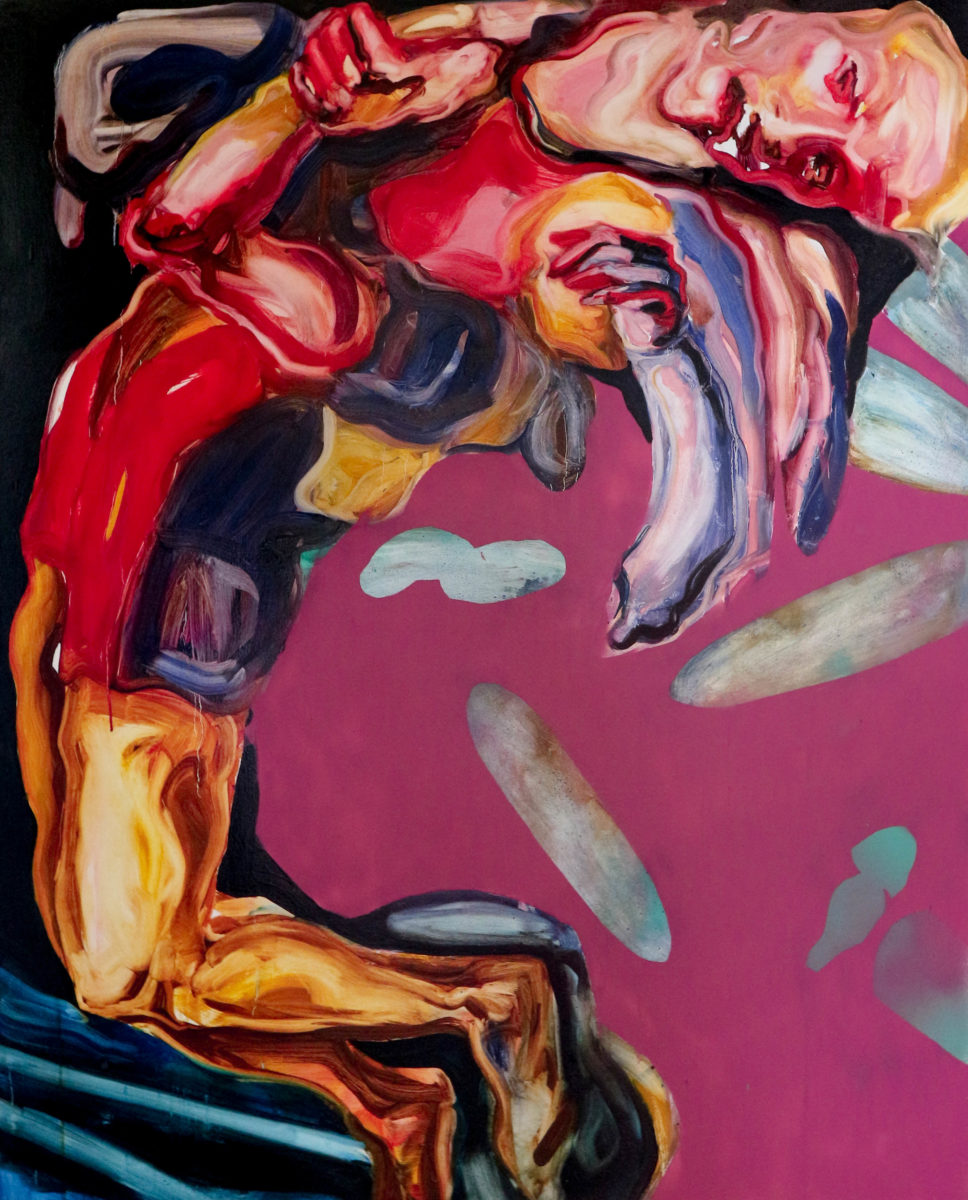
The term “figure” has many interpretations, from the idea of the physical presence of a body to “figurative painting” as the antithesis of abstraction, as well as the power and nuance of figurative speech. All of these ideas come into play at Figurations, an exhibition at Brighton’s ONCA
Gallery that explores the representation and agency of the queer body.
It includes paintings by Elija Grybe
, whose slippery, fleshy brushwork presents semi-contorted bodies that evoke emotional and physical violence, while retaining an alluring expressionistic quality. Bolder, graphic slices of colour and exposed underpainting also feature, which speak to the aesthetics of the digital age, where imagery can be eradicated and replaced with a swift click.
“Slippery, fleshy brushwork presents semi-contorted bodies that evoke emotional and physical violence”
Meanwhile, Christopher Daubaras’s paintings explore issues of mental health and the inner psyche through the lens of Lithuanian folklore, proving that concerns of the body are more than skin deep. A variety of humanoid figures and fantastical beasts are presented in explosive colour, many of which recall the masks and iconography found in the artist’s grandparents’ home.
However, Figurations is not limited to works on paper and canvas. Evidence of performance work by Maria Unger comes in the form of photographs that present the artist in chopped up, fragmented garments that isolate and reimagine the body in new ways, while her gestures allude to bodily communication and perhaps even the absurd entanglements that often ensue when we dress and undress.
- An Nguyen, Oscar Cheung’s ‘FIGURATIONS’ Exhibition Souvenirs on Model Joe Kelland, 2020
The importance of clothing—and branding—in terms of how we present ourselves is further addressed, not only in the visual identity crafted for the show by Oscar Cheung
, whose fluid typography seems never fully fixed, but its presence on socks and scarves hung on a rail and dubbed “exhibition souvenirs” (and yes, they are for sale).
These items are present in imagery styled and conceived by An Nguyen
(co-curator of the show alongside Ella Winning), who manipulates and layers each piece to present them as both sculptural objects and fashionable adornments.
Look closely and you will also see a foiled, humanoid figure present in many of these shots, which is reintroduced alongside Daubara’s paintings in the show. This two-headed creature functions as a recurring motif throughout and is reminiscent of the inky splodges of a Rorschach test, thus reminding us that psychological interpretation is ultimately a subjective undertaking.
